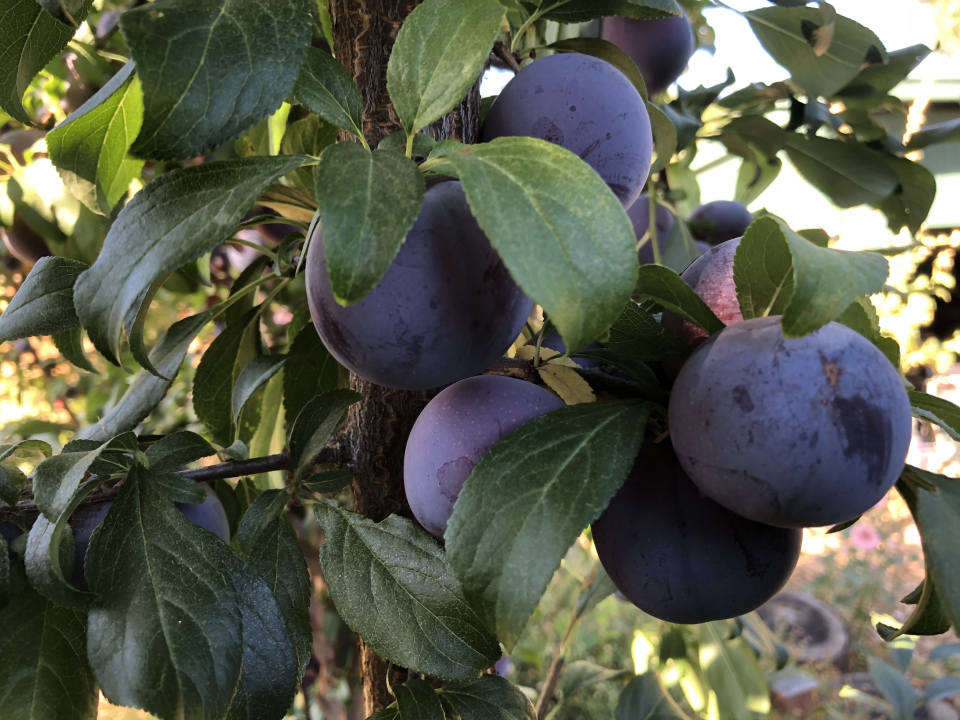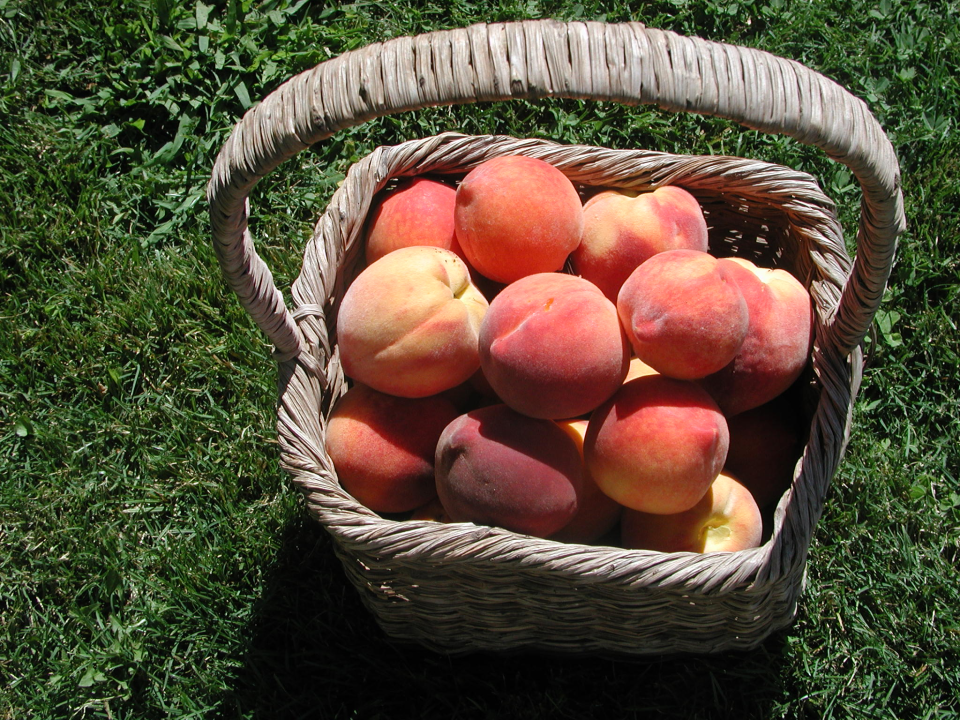Enjoying a home orchard: Here are things to consider when planting fruit trees in your garden
This July and August I have been enjoying the fruits of past orchard plantings at our home in Morada. I had a large half-acre fruit orchard where I previously lived and I had 60-70 fruit trees.
Hence, when I moved to a home on 2/3 of an acre 5 years ago I had fewer spaces for fruit, but since the quality of fresh fruit is hard to beat, I planted 5 citrus trees, a ‘Red Haven’ Peach, an ‘Elberta’ peach and a ‘Rio Oso Gem’ peach and a ‘Santa Rosa’ plum.
I also grafted a flowering plum to a ‘Laroda’ plum along with some nearby root sprouts so I now have two fully grown Laroda plums to enjoy and they produce a lot of fruit. I also tried to graft ‘Elephant Heart’ plum scion wood too, but alas, the grafts didn’t take. I liked the ‘Elephant Heart’ because it is excellent and it ripens in late August when most other plums are finished.
I am now enjoying the fruits of my new plantings. One of the reasons that the ‘Red Haven’ is an excellent choice for backyard gardeners aside from the excellent fruit is the fact that they ripen over 3 weeks or more. Hence, you are not overwhelmed with lots of fruit ripening at the same time. I can remember getting out a bit late to one of my peach trees at my old home and finding half on the ground as they tend to ripen all at the same time.

This is a nice attribute of the ‘Laroda’ plum too as it stays on the tree when ripe pretty well and its season lasts well over a month. The same cannot be said for the ‘Santa Rosa’ plum which has about a two-week window or less to enjoy. The Laroda plum gets high scores from Dave Wilson nursery taste tests. Pollenizers are required and it is pollinated by ‘Santa Rosa’ ‘Burgundy’ and other plums, so it is good to have other plums in your home orchard.
Apples are not such a great choice for the backyard. Fireblight and codling moth are two problems not easily dealt with. I had about 30 apple varieties at my old home and had a difficult time dealing with these two problems. One heirloom apple was totally killed by fireblight just as it was coming into full production. Codling moths ruined lots of my apples. I still got quite a few, but it was discouraging to see many spoiled by Codling moths.
When planning a home orchard there are lots of things to consider. Plant trees that will produce fruit sequentially so that you have no two trees producing peaches or plums at the same time. Since space is usually limited, it is wise to plant dwarf or semi-dwarf trees which will make pruning and picking easier too. More information on smaller trees is available from Dave Wilson Nursery, see: davewilson.com/home-gardens/backyard-orchard-culture

Another way to pack more trees into small spaces, and thus increase the variety of fruit is to plant multi-grafted trees. This can work, but you need to be diligent. One or two of the grafts can become dominant and will crowd out the other grafts, so the fruit salad is not balanced among the tree parts. To avoid this here are some things you can do. If possible, select a tree that has the grafted limbs evenly spaced around the trunk and always plant the smallest limb (the "weakest" variety) to the south/southwest to insure that it gets plenty of sun.
Another approach is high-density planting with different varieties. You can plant 3 or 4 trees close together. The trees should have similar rootstock vigor so that one or more trees don’t dominate the others. The crowding of the trees will help decrease their vigor and summer pruning will keep them as fruit bushes that will provide crops of manageable size and the use of ladders can be avoided. See fruit bush at: homeorchard.ucdavis.edu/8057.pdf
Another approach to maximize your space is to espalier fruit trees against a wall, a fence or on a trellis in two dimensions. It is a technique started in Roman times. The fruit trees should be exposed to at least 6 hours or more of sunlight and require paying attention to manage and train the plant to the espalier form; for more information, see: sacmg.ucanr.edu/files/283849.pdf.
May your backyard orchard be fruitful!
If you have a gardening-related question you can contact the UC Master Gardeners at (209) 953-6112. More information can be found on our website: sjmastergardeners.ucanr.edu/CONTACT_US
This article originally appeared on The Record: Home orchards: Tips for planting fruit trees in your garden

